Highlights include articles on Columbus’ mosquitoes, a 25-year update on the Glen Echo stabilization plan, plans for restoring the Glen Echo mural, and how to control invasive lesser celandine.
Highlights include articles on Columbus’ mosquitoes, a 25-year update on the Glen Echo stabilization plan, plans for restoring the Glen Echo mural, and how to control invasive lesser celandine.
This ravine is found at Highbanks Metro Park; according to employees the stream has no official name. An 1856 Atlas of Delaware County shows it as “Spring Run” but other atlases since then show no name.
It flows into the Olentangy River. A trail that begins next to the nature center crosses over the stream via the bridge shown in the photo. The ravine walls and base of the stream are composed of many layers of oil shale.
Looking down from the bridge. Visitors are allowed to leave the trail to explore the stream.
Closeup of a wall of shale.
Water flow draining from the previous flood plain on the deposit side of the stream has created an alluvial fan.
False Solomon’s seal or Solomon’s Plume (Maianthemum racemosum) next to jewelweed.
A granite erratic, carried along by the former glaciers that created this stream, and featuring a circular hole probably created by dripping water.
Photos by Ellie Nowels, June 2021
Rush Run has its headwaters in a retention pond north of I-270, then travels south to 161, turning southeast on its way to the Olentangy River, where it is surrounded by a Columbus Recreation and Parks nature preserve.
Photos were taken in the summer of 2020 by Ellie Nowels.
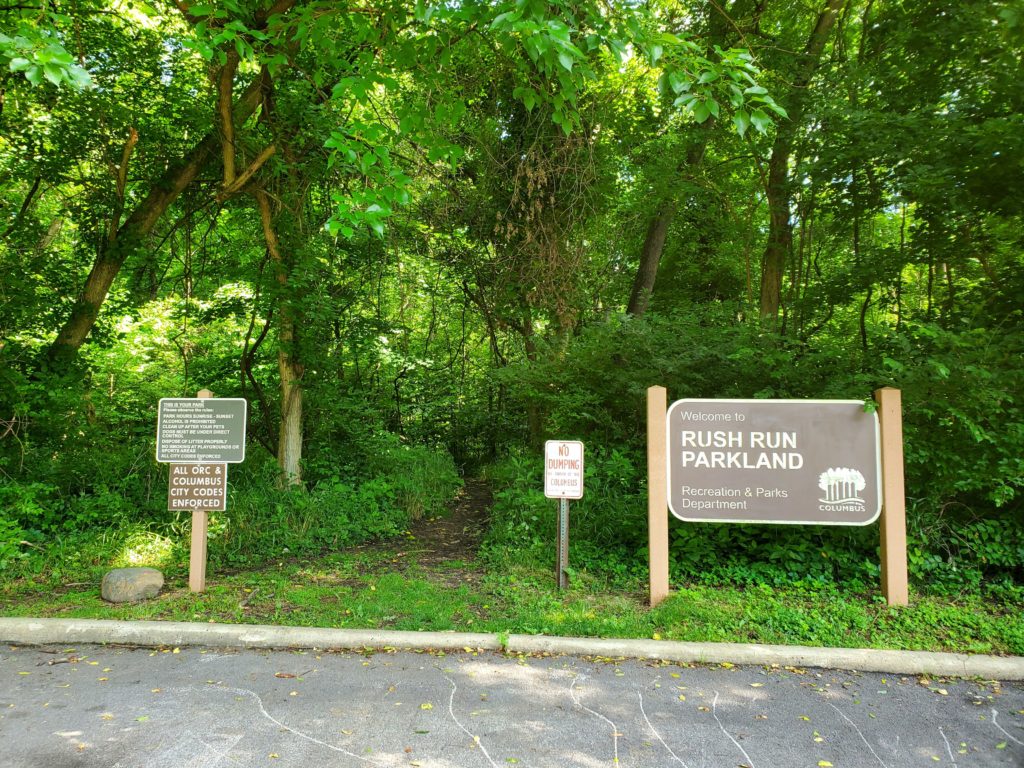
Entrance to the park is found behind the rental office of Broadmeadows apartments.
Just beyond the trees is the confluence with the Olentangy River.
One of several small tributaries in the parkland.
Still walking eastward, the path on the south side ends right before the western end of Walnut Grove Cemetery. A large sewer pipe crosses the stream here; on the north side, the park continues into the village of Riverlea, with a number of walking paths in the woods.
This is the section of Rush Run that runs between Proprietors and McCoy roads. The stream bed and ravine walls are primarily shale throughout this section.
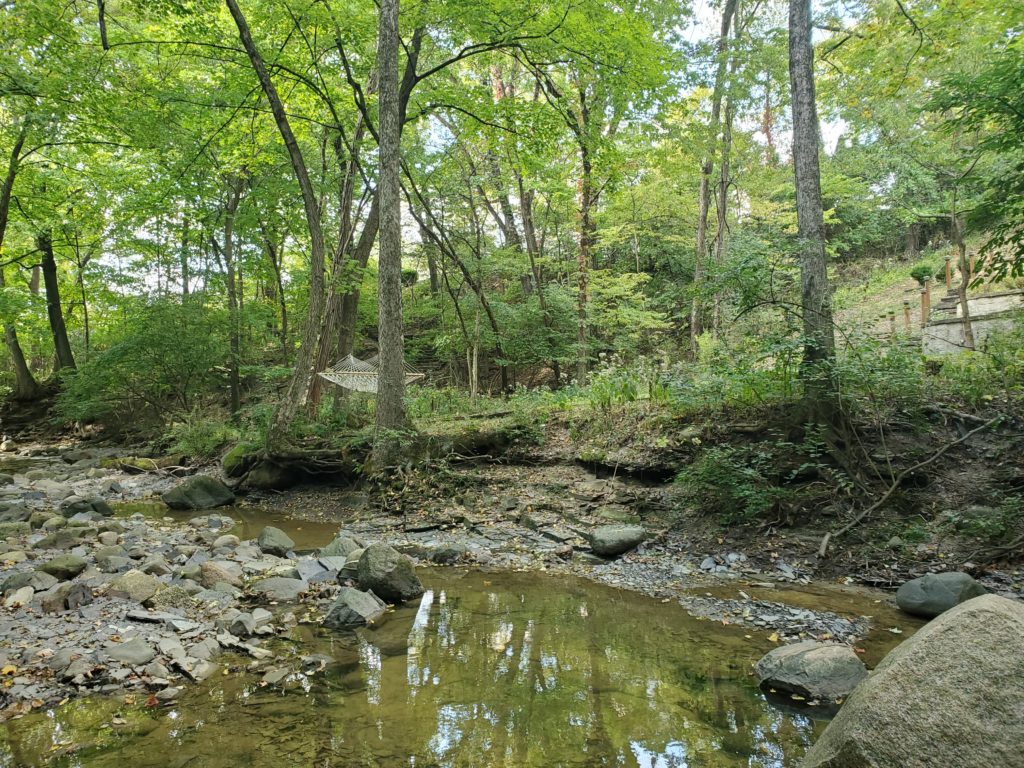
Property owners along this section (Proprietors to McCoy) enjoy this natural treasure.
Fractures and moss give texture to the shale walls.
Plenty of food for the wildlife!
As you approach the culvert under 161 just east of Proprietors Road, there is plenty of evidence of human activity.
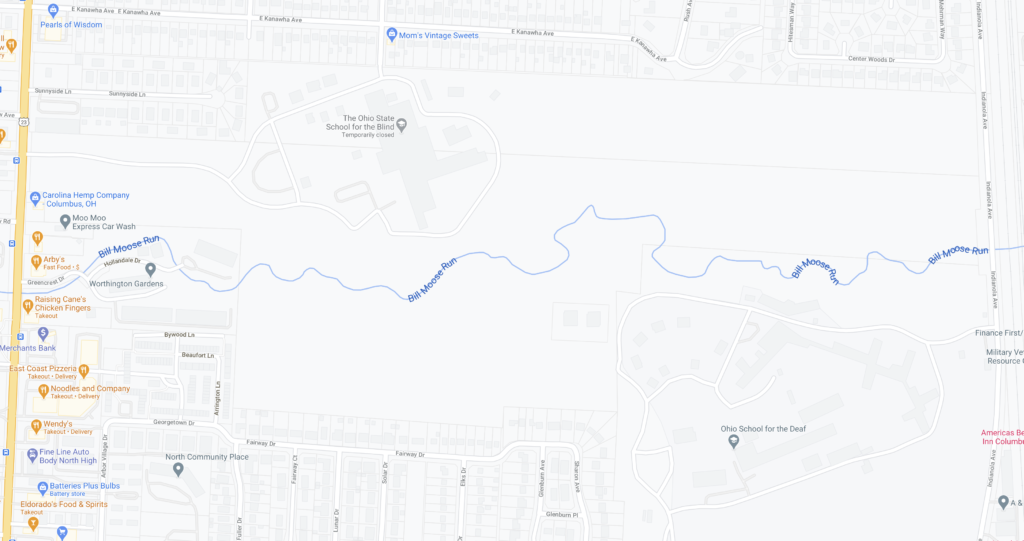
October, 2020 – photos by Ellie Nowels
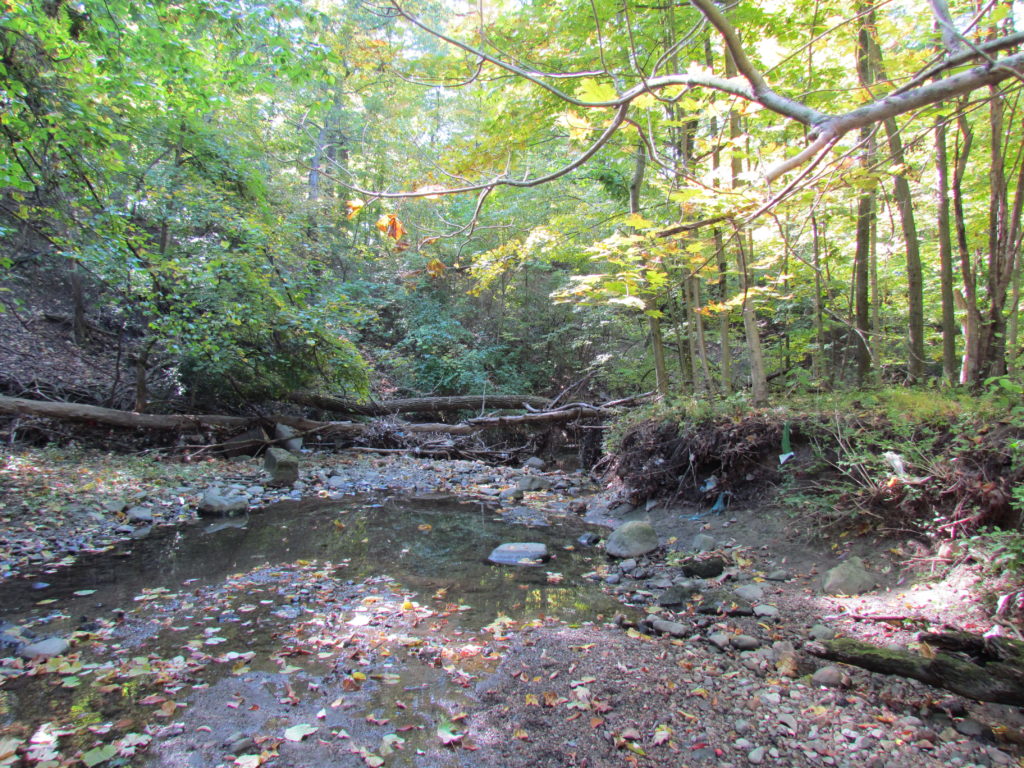 This area of the stream does have some invasives but also good stands of hardwood. There is a good amount of riparian woodland on both sides of the stream for the majority of the length of this section.
This area of the stream does have some invasives but also good stands of hardwood. There is a good amount of riparian woodland on both sides of the stream for the majority of the length of this section.
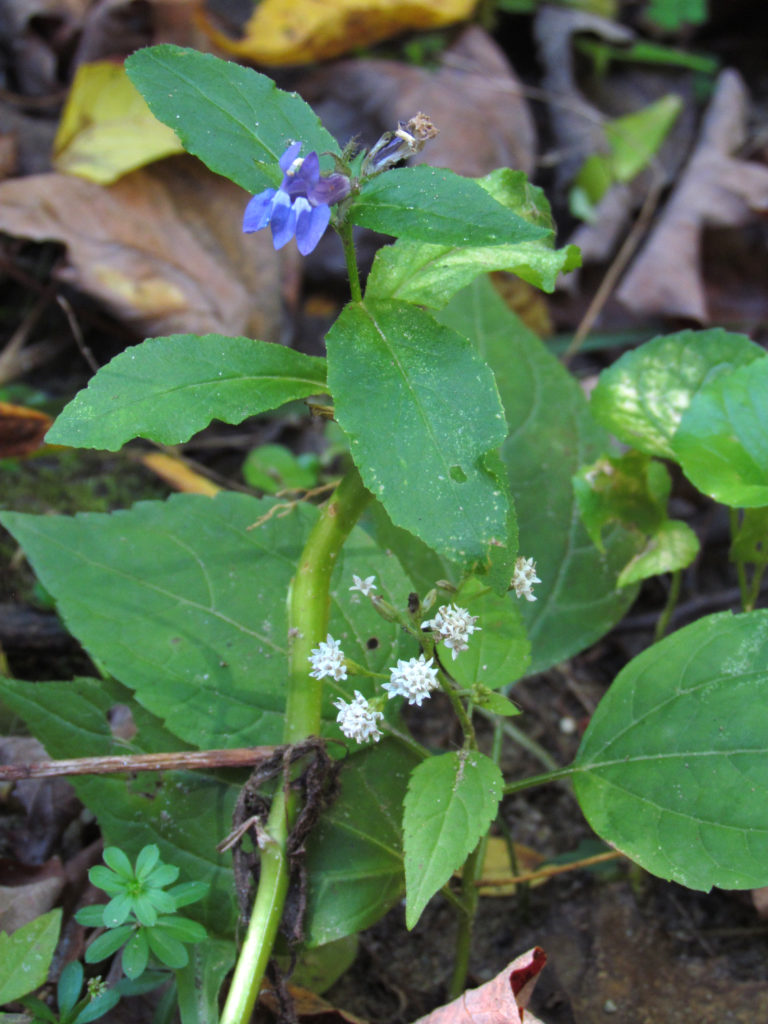 Very few flowers were evident (early October), but this great blue lobelia and white snakeroot were still hanging on.
Very few flowers were evident (early October), but this great blue lobelia and white snakeroot were still hanging on.
 Erosion is intense in some areas.
Erosion is intense in some areas.
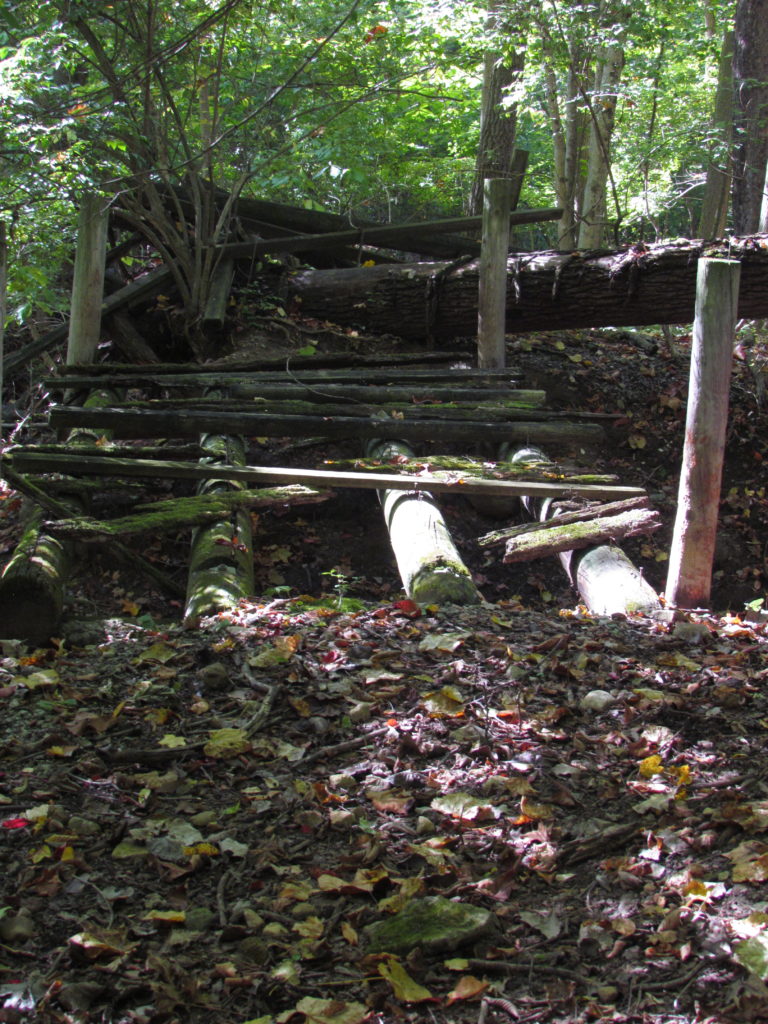 There are a number of abandoned bridges or other structures along the way; this is near the Blind School and goes over a small sub-tributary.
There are a number of abandoned bridges or other structures along the way; this is near the Blind School and goes over a small sub-tributary.
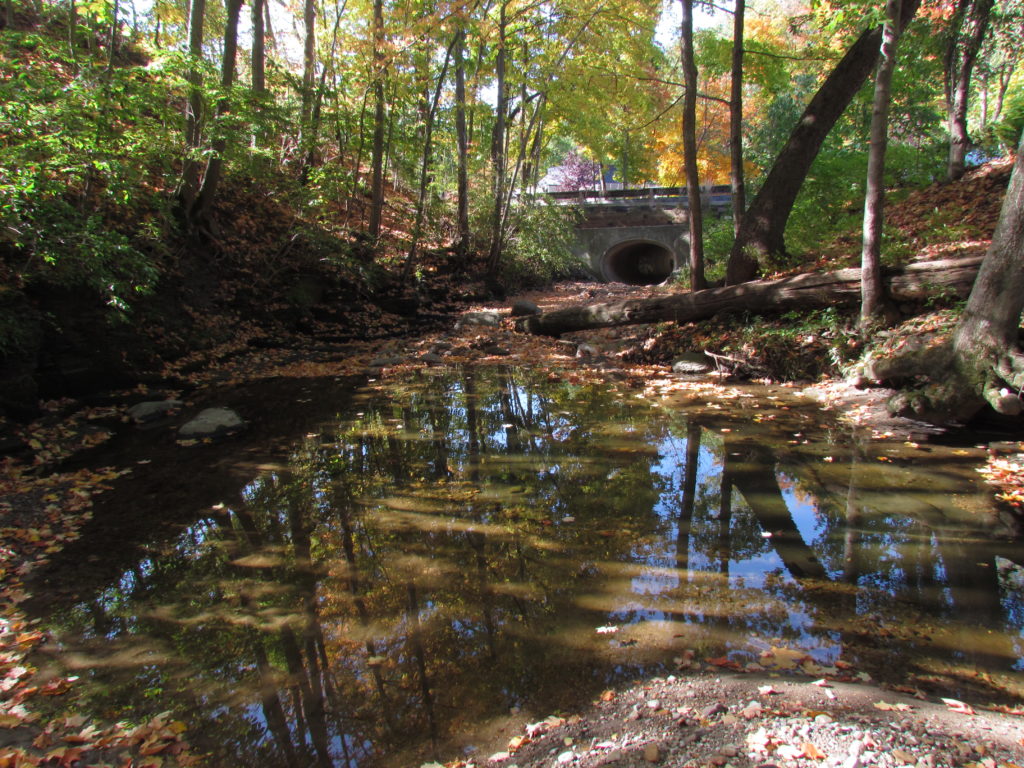 Not until it approaches the Worthington Gardens apartments does the gravel and sediment base give way to a shale base.
Not until it approaches the Worthington Gardens apartments does the gravel and sediment base give way to a shale base.
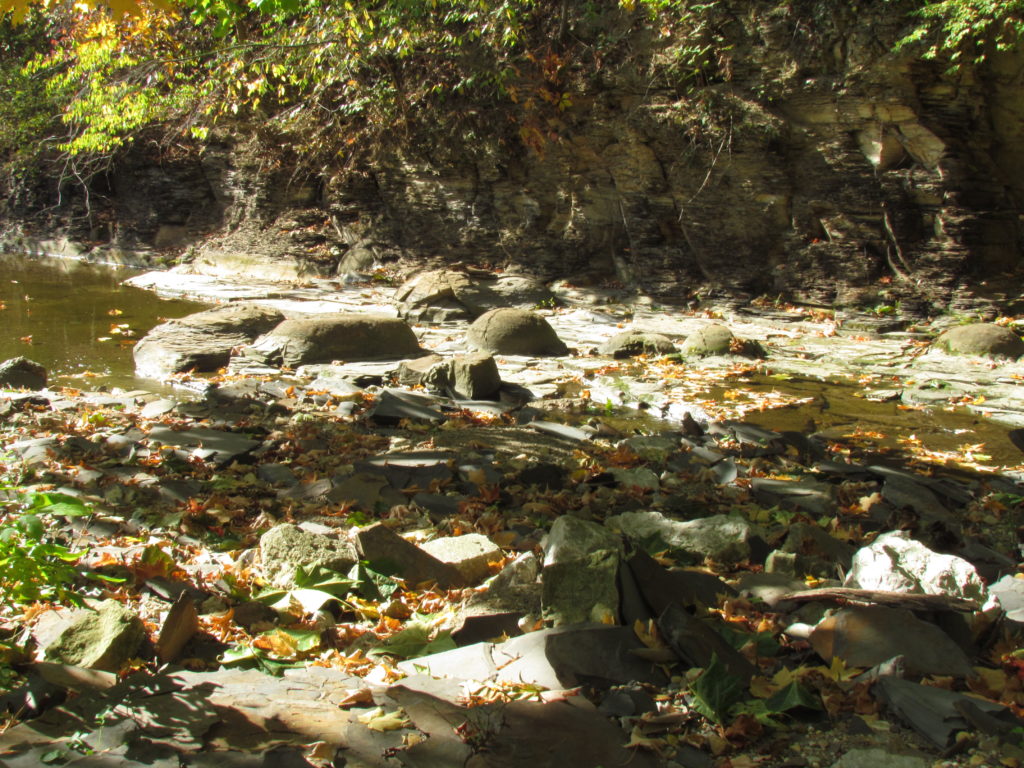 Many concretions can be found in the stretch that goes through the apartments. The channel is narrower here and the walls show the ancient shale layers.
Many concretions can be found in the stretch that goes through the apartments. The channel is narrower here and the walls show the ancient shale layers.
Walhalla is a ravine in Clintonville that follows a street by the same name. It is only visible from just east of High St. to Indianola; the rest has been channeled underground.
July, 2020 – photos by Ellie Nowels
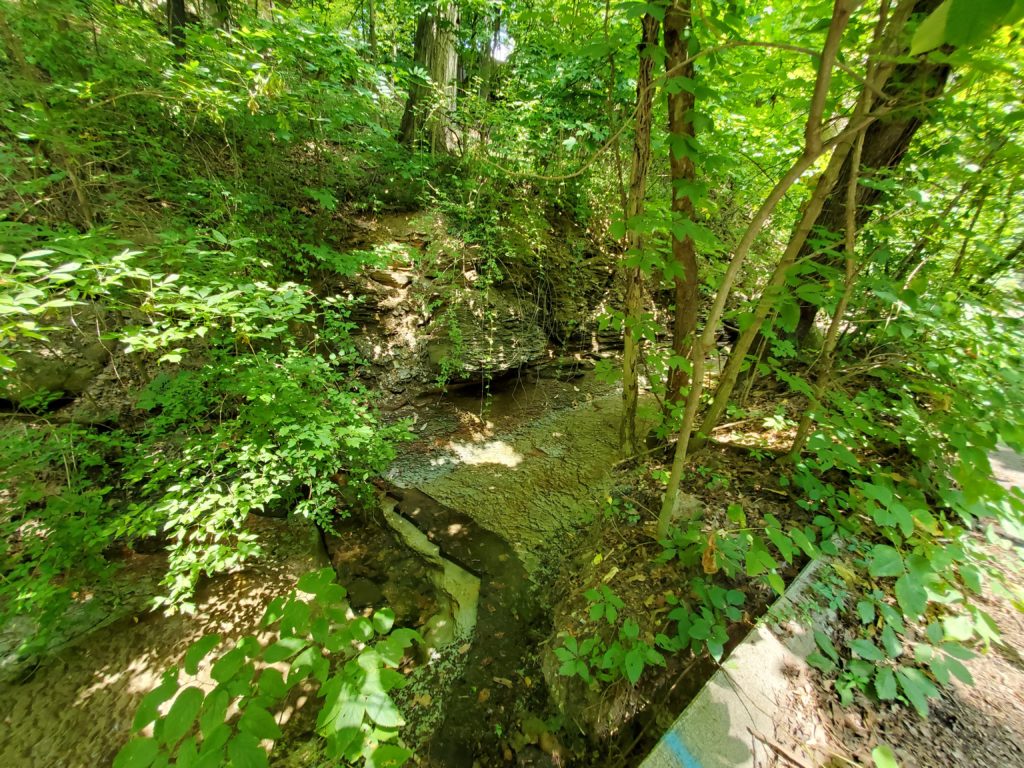
This section has a wall to separate the stream from the road.
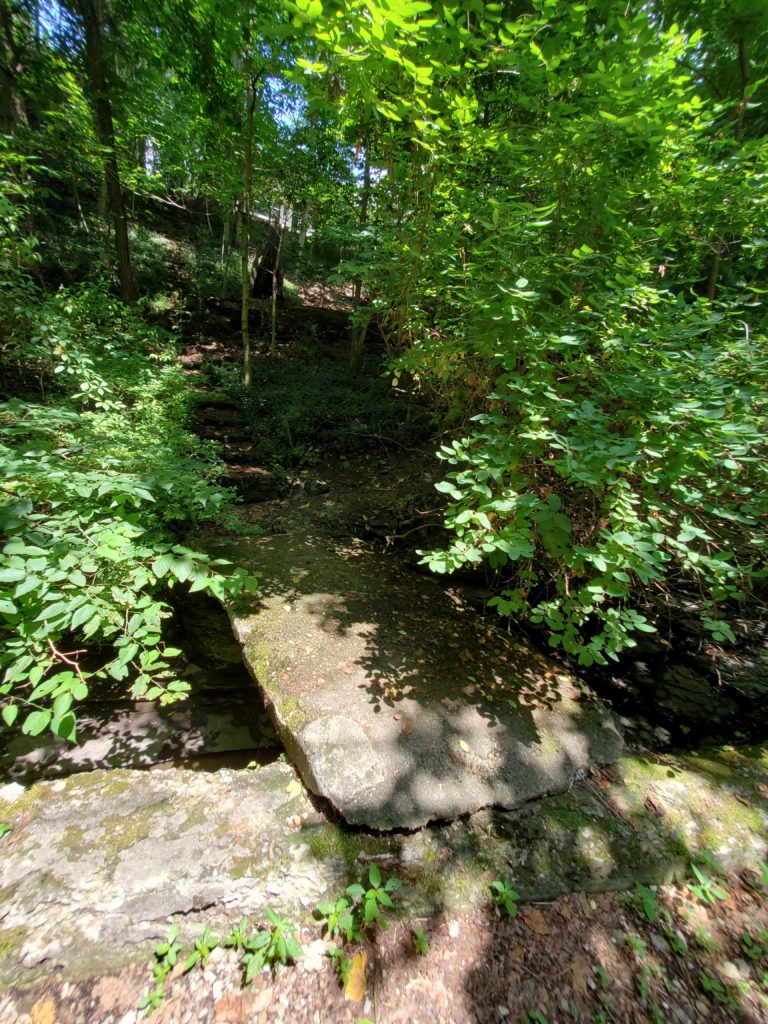
Most homes don’t front on Walhalla but rather have very steep back yards. Some like this have some homemade steps or bridges to connect them to the street.
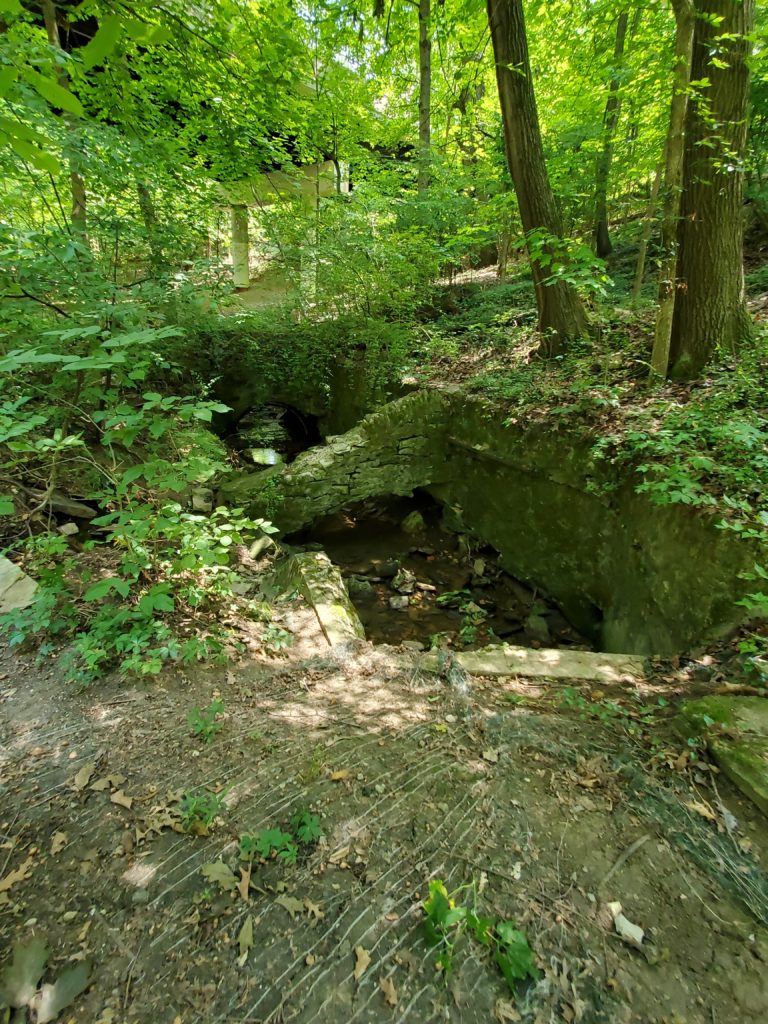
The stream runs mostly north of the road, but crosses under the road to follow it on the south side for a bit.
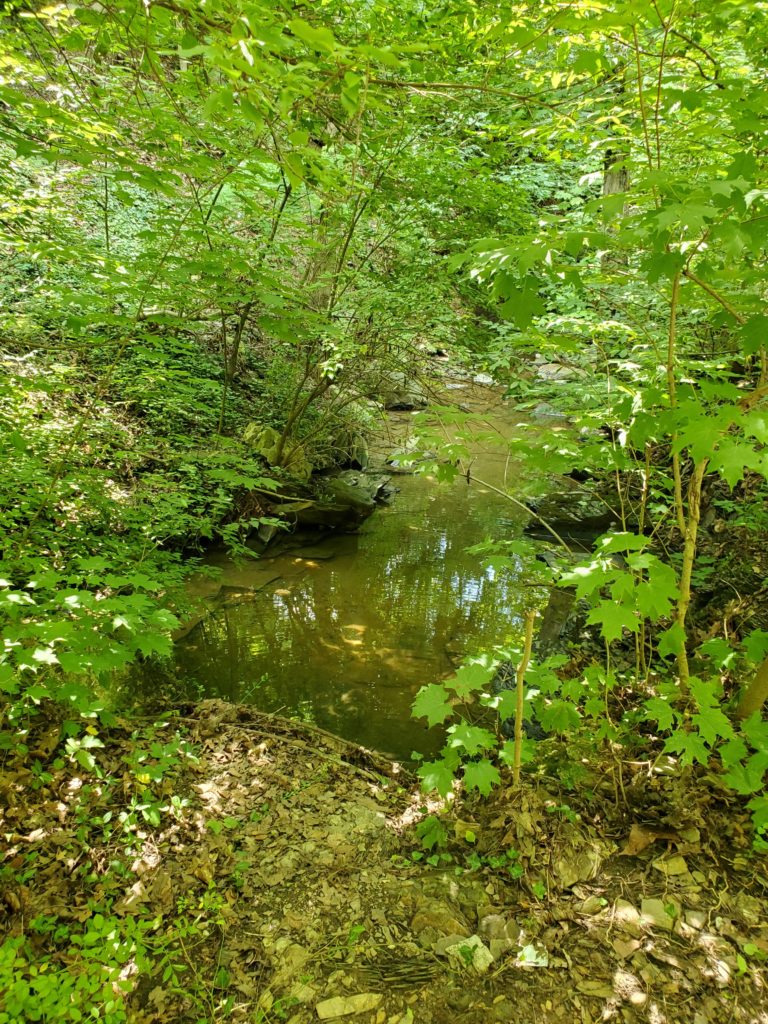
The stream runs quite close to the roadway.
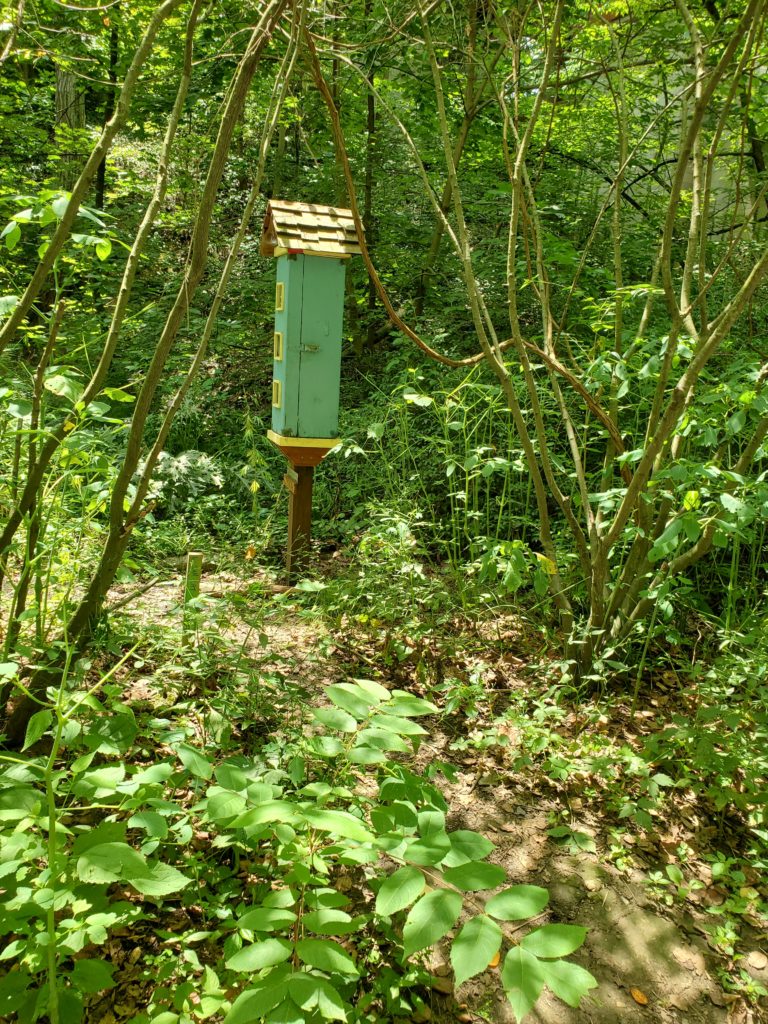
A Little Free Library. There’s a roadside path just in this small area, but since there are no sidewalks you mostly have to walk in the road.
There are 19 nature preserves in Franklin County that are owned by Columbus Recreation and Parks. This is one that is quite small and not well known. Old Beechwold is accessed from North High St. a little bit south of Graceland Shopping Center and Kenney Park, and is a neighborhood of stately homes, mature trees (beech and others), and lovely gardens. This unnamed tributary is channelized at the east end (at Rustic Bridge) and flows into the Olentangy. It’s a small park, unmarked, with foot access at Rustic Bridge and on Riverview where it curves into Olentangy Blvd. The stream isn’t shown on USGS topography maps or on Google maps, but it was flowing even in the middle of a dry summer.
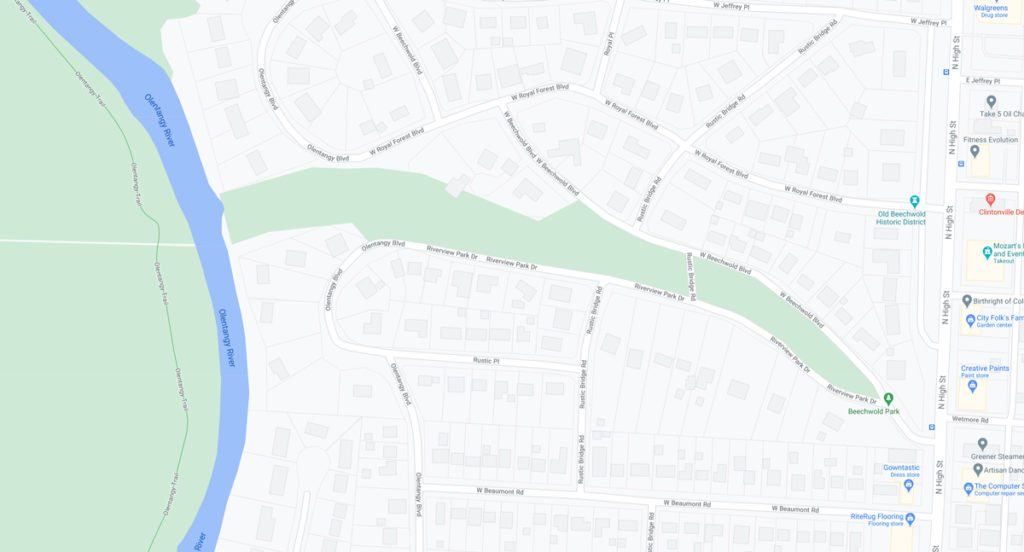
July, 2020 – Photos by Ellie Nowels
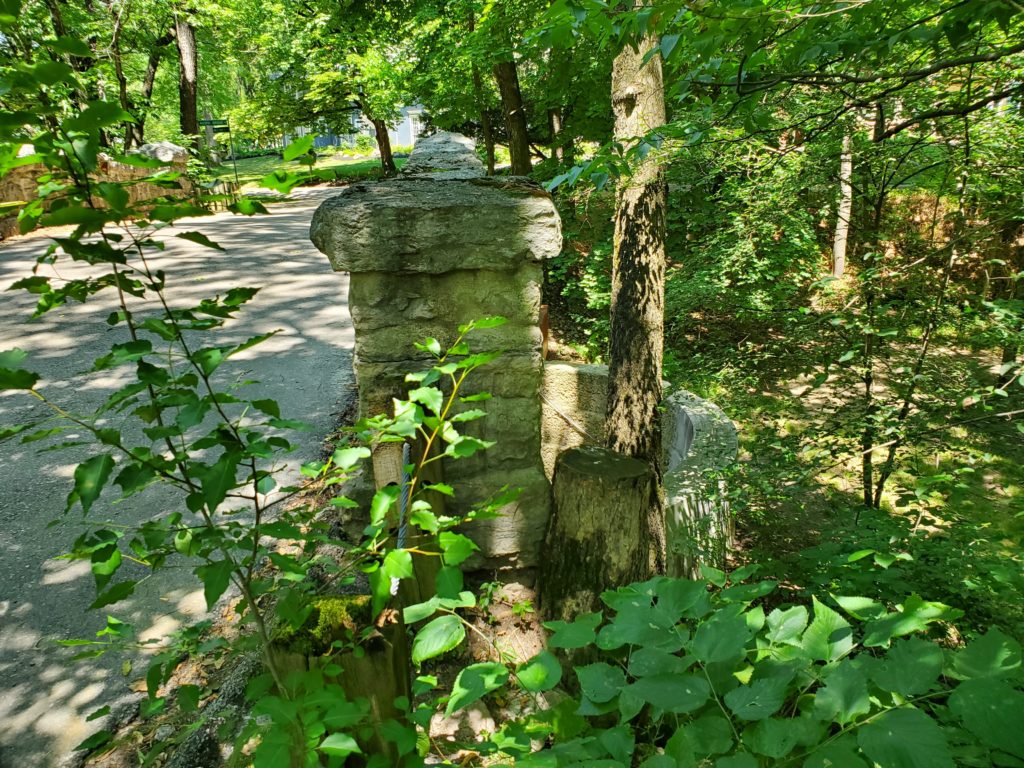 This is the east end of the preserve; the stream is channelized from the Rustic Bridge east to its point of origin.
This is the east end of the preserve; the stream is channelized from the Rustic Bridge east to its point of origin.
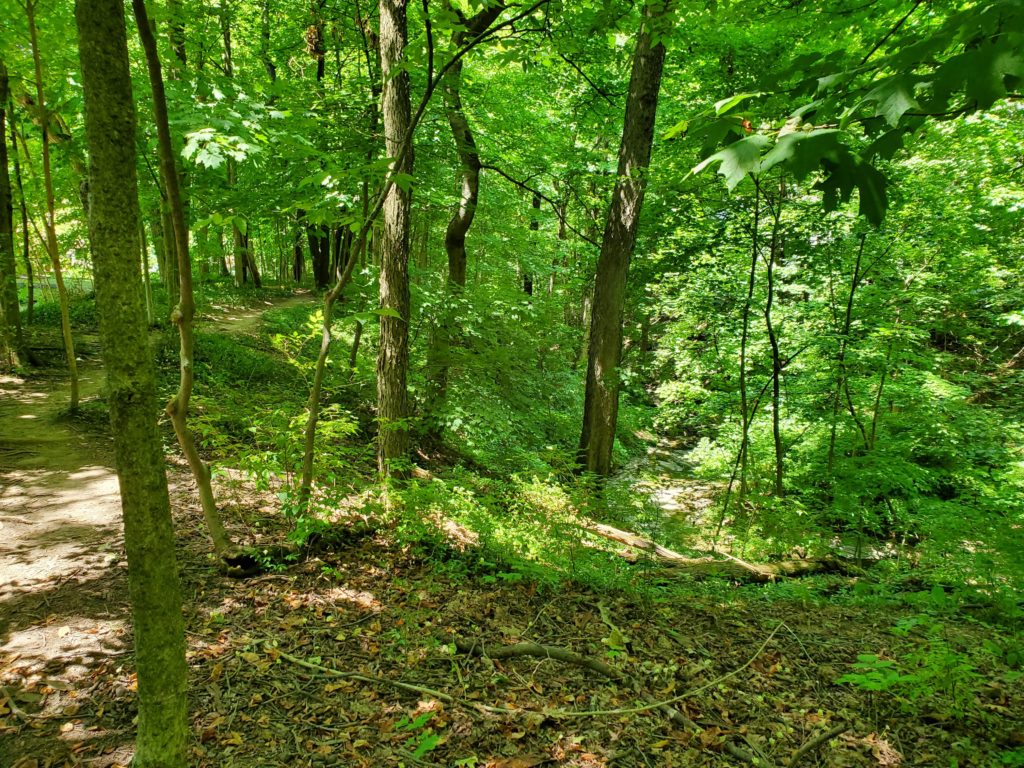 You can follow the dirt path at the top of the hill or climb down into the ravine to walk in the stream.
You can follow the dirt path at the top of the hill or climb down into the ravine to walk in the stream.
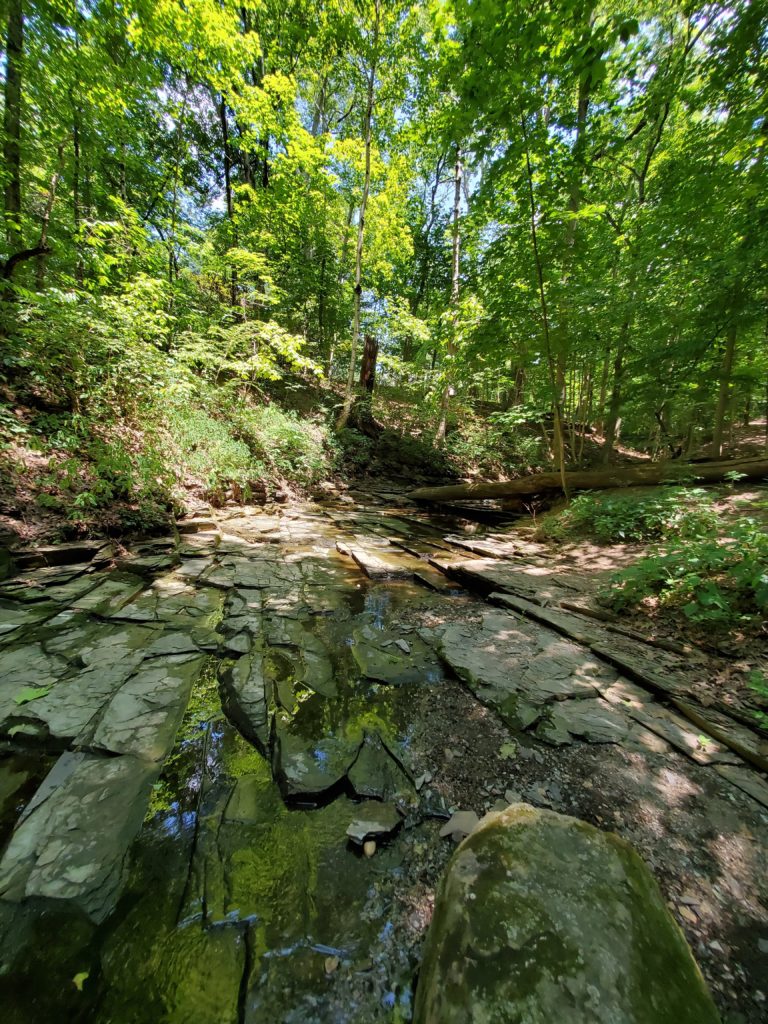 A shale-lined stream bed makes for a lovely walk.
A shale-lined stream bed makes for a lovely walk.
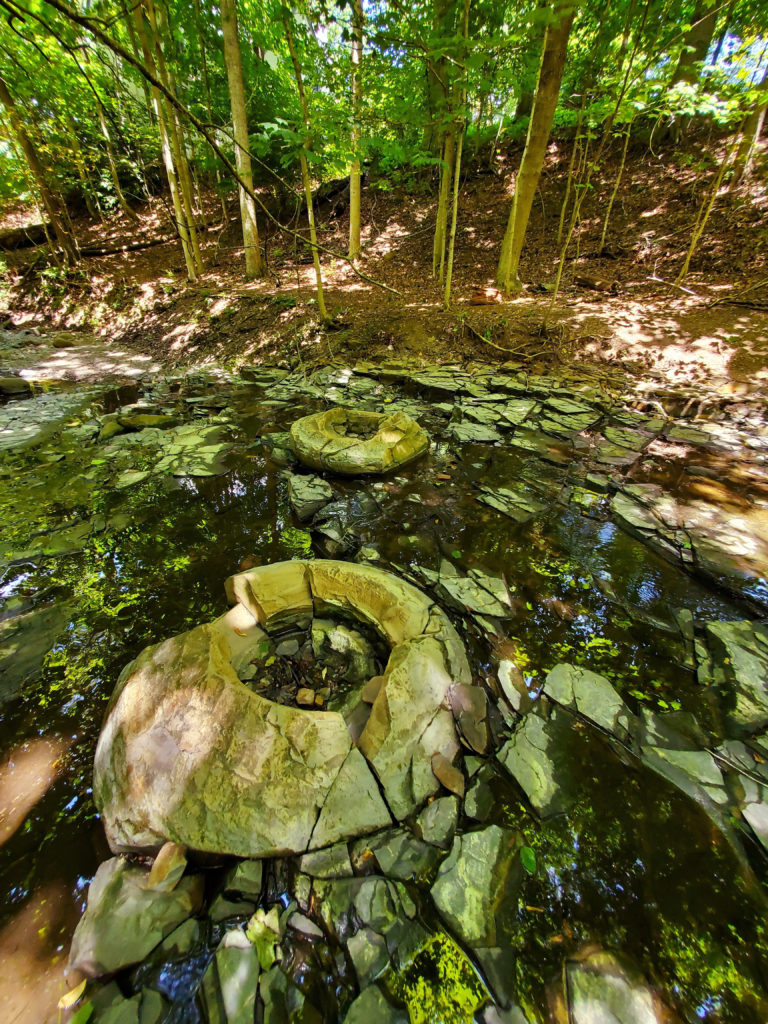 A number of nice concretions in the stream bed.
A number of nice concretions in the stream bed.
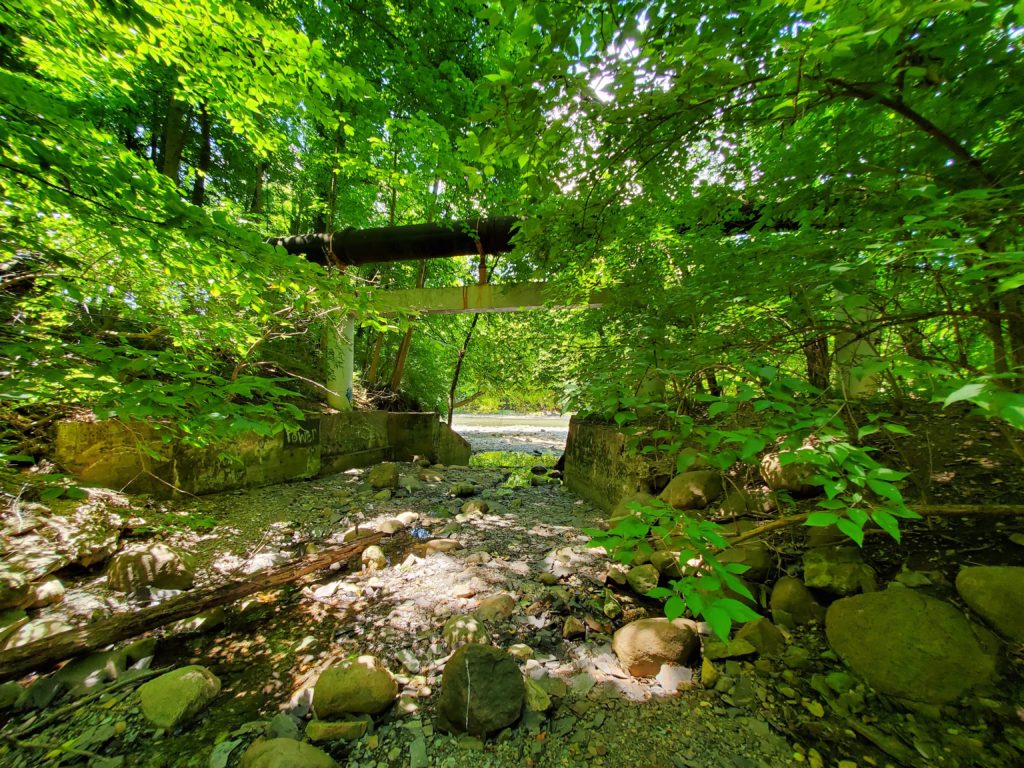
Where the stream enters the Olentangy it passes under some sewer pipes. There are no public pathways north or south along the river bank.
Photos from the section of Bill Moose Run between its confluence with the Olentangy River and where it enters the tunnel under North High St.
July, 2020 – Photos by Ellie Nowels
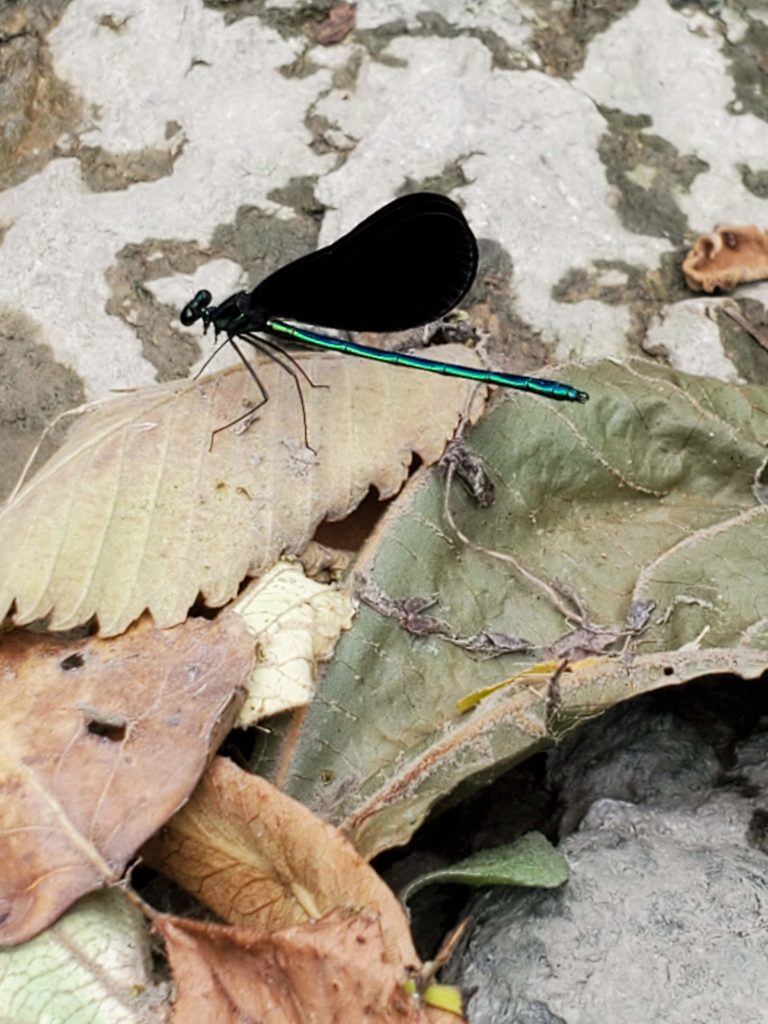
Ebony jewelwing damselfly – one of many found near the water.
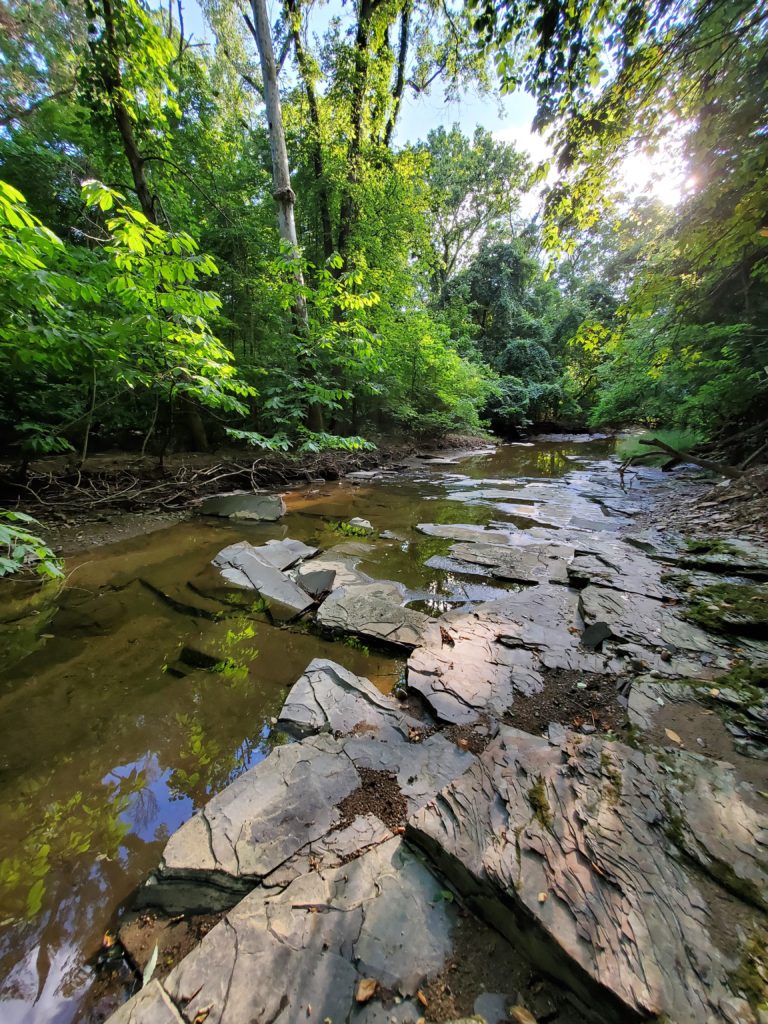
Much of the stream bed is lined with shale. A paw paw grove can be seen on the left.
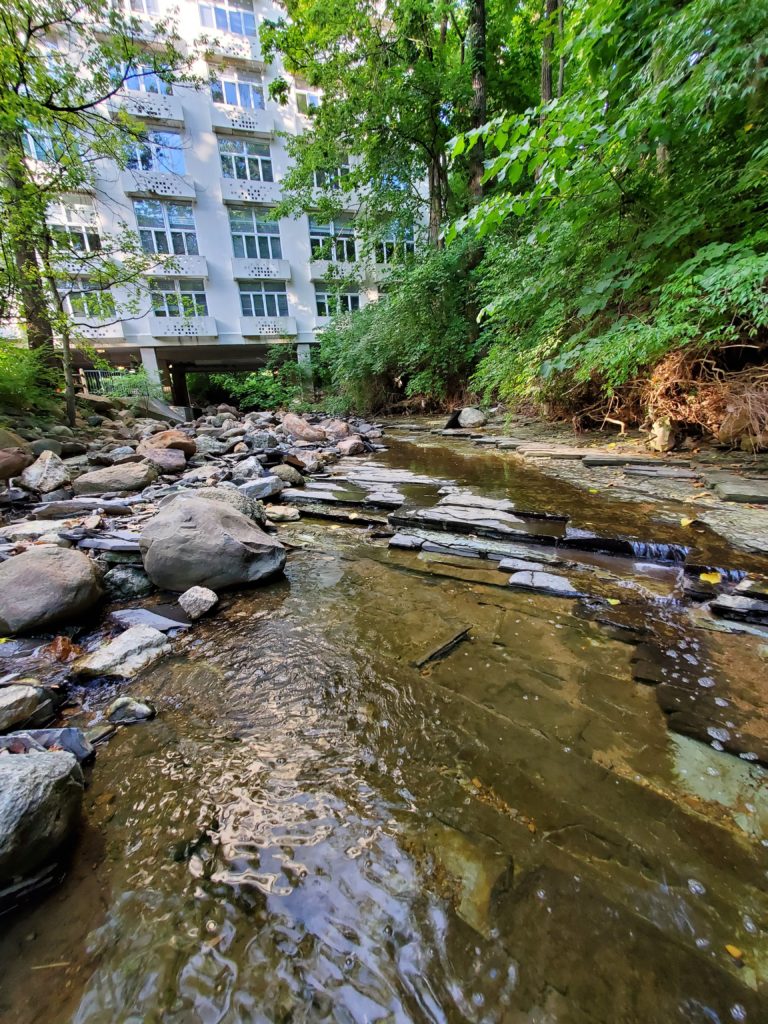
The stream actually passes under Wesley Glen. See Ravinia Spring/Summer 2020 for an article about Wesley Glen’s appreciation of this lovely stream in their back yard.
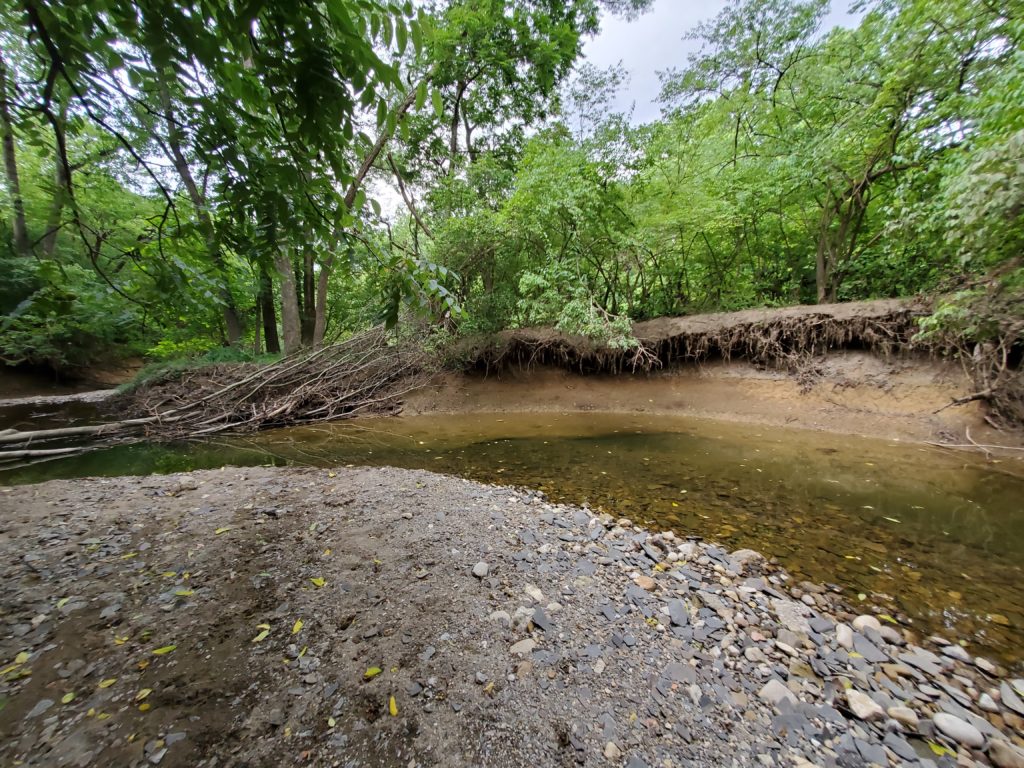
At the end of Bill Moose Run, erosion is changing the shape of the mouth of the stream by undercutting the banks.
When: April 28, 2019, 2:00 – 4:00 p.m.
Where: New Parkland Shafer Park north of St Rt 161 in Little Turtle
Meeting site: Shafer Park, 5220 Cambria Way, Westerville
Be among the first to explore this new MetroPark acquisition using Clean Ohio Conservation Funding. The parkland is a ravine system located east and along Big Walnut Creek, and north of Blendon Woods Metro Park. More details will be posted on Friends of the Ravines website and Facebook page.
Please note: Shafer Park is a primitive setting with no running water or restroom facilities. Please bring a reusable bottle to stay hydrated.
Plant Walk Guides: Metro ParksAssistant Resource Manager Carrie Morrow and Forest Ecologist Andrew Boose.
Wear comfortable shoes. This is a rain or shine event. FOR T-shirts will be on sale for $25.
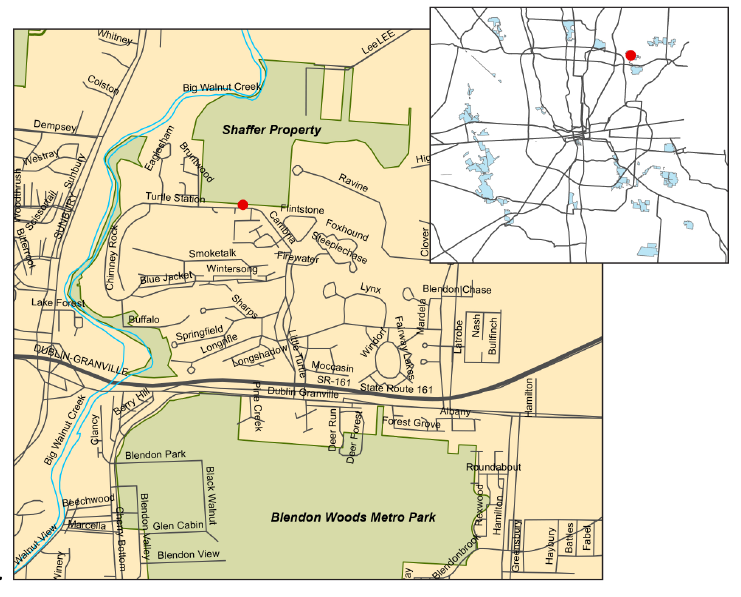
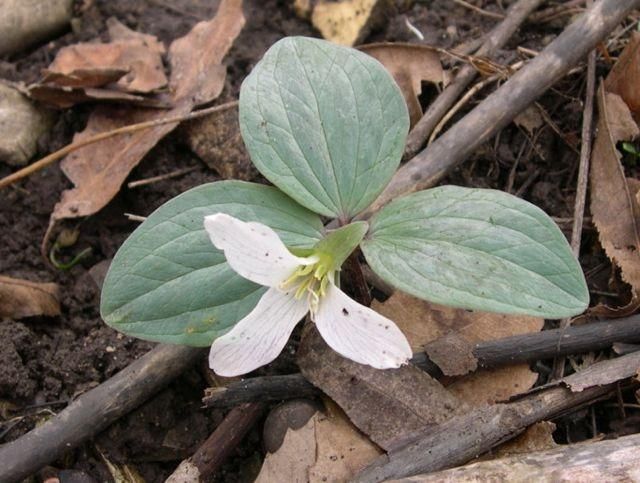
On a sunny, but chilly day, an enthusiastic crowd stood on an observation deck overlooking a large patch of trout lilies. A ravine slope along the edge of the Scioto River with mature, leafless trees set the stage for emerging spring ephemerals whose beauty was highlighted by Friends of the Ravines’ annual plant walk. On our walk, we saw specimens of cut-leaved toothwort, Dutchman’s breeches, spring beauty, bloodroot, Virginia waterleaf, and harbinger-of-spring. And here and there the landscape was dotted with the familiar blue blossoms of Virginia bluebells and common blue violet. Leading walk were Metro Park Naturalists, Carrie Morrow and Gregg Wittman who told the history of the 620-acre park located just eight miles south of downtown Columbus.
After the one-and-a-half-hour walk, participants socialized and enjoyed hot chocolate and cookies at the park’s Arrowhead Picnic Area. Metro Parks has developed this park for people of all ages and abilities to experience nature and enjoy quality time for family and friends. Be sure to check Friends of the Ravines’ Facebook page and website for information about FOR’s 2019 Annual Plant Walk. Location TBA.